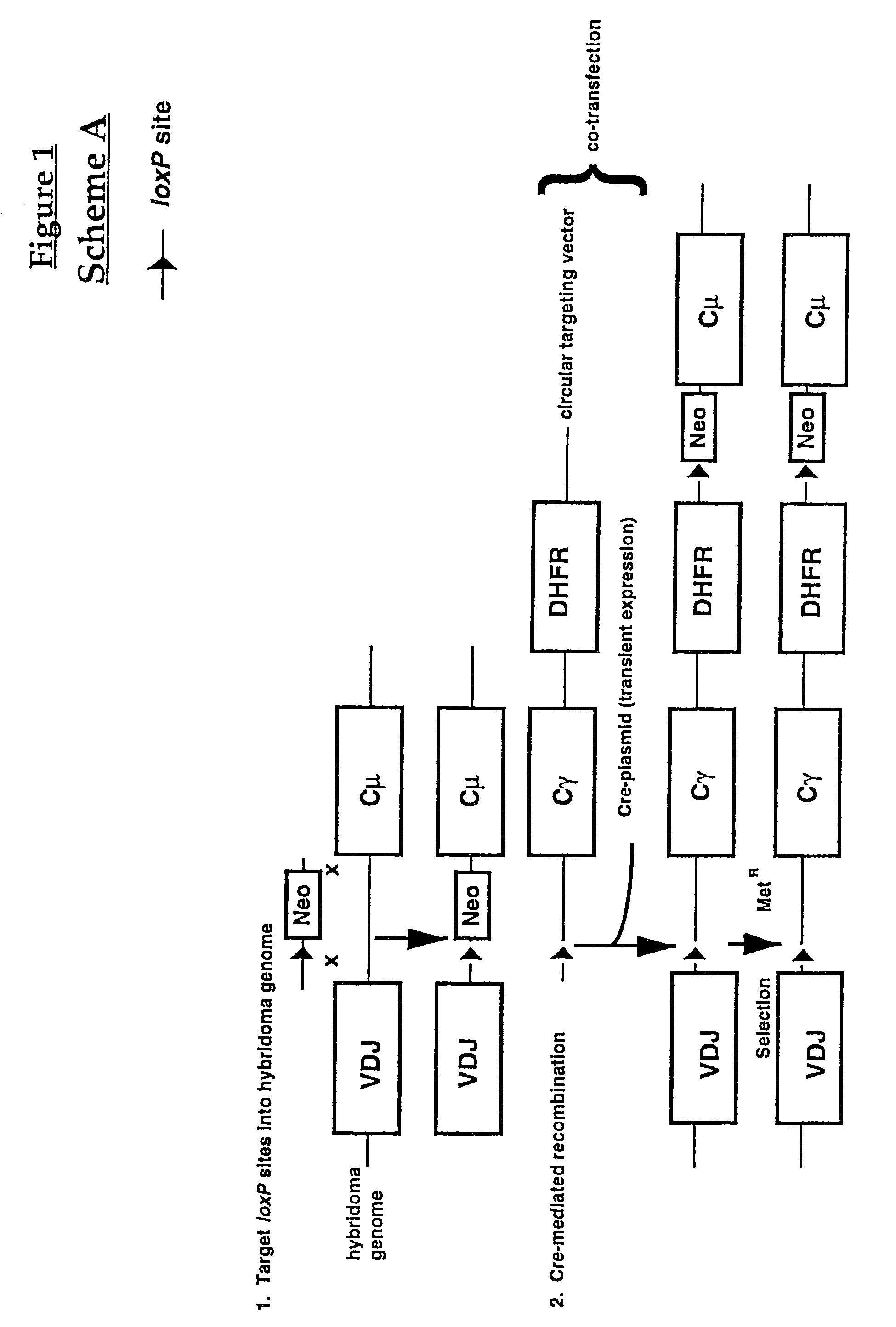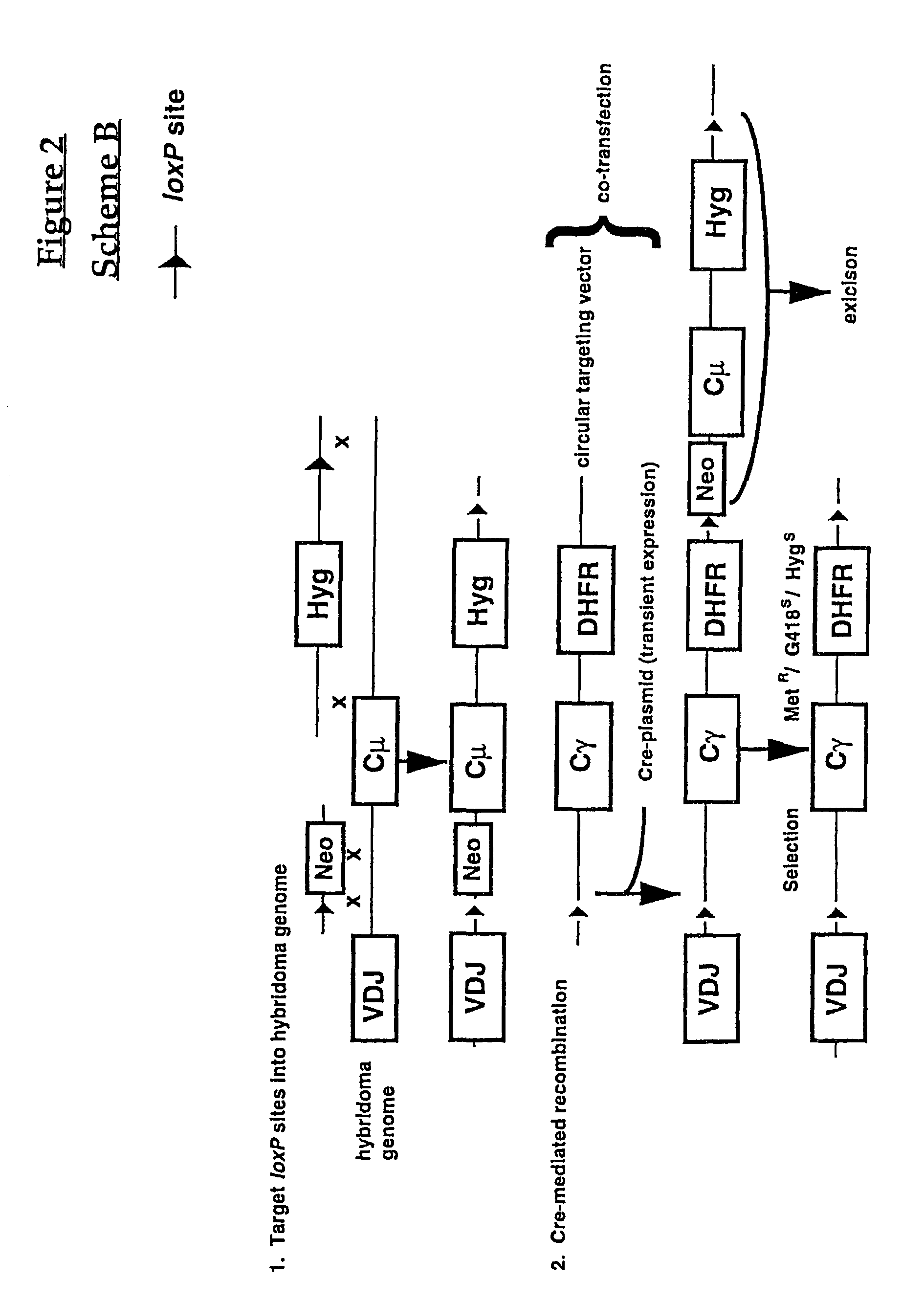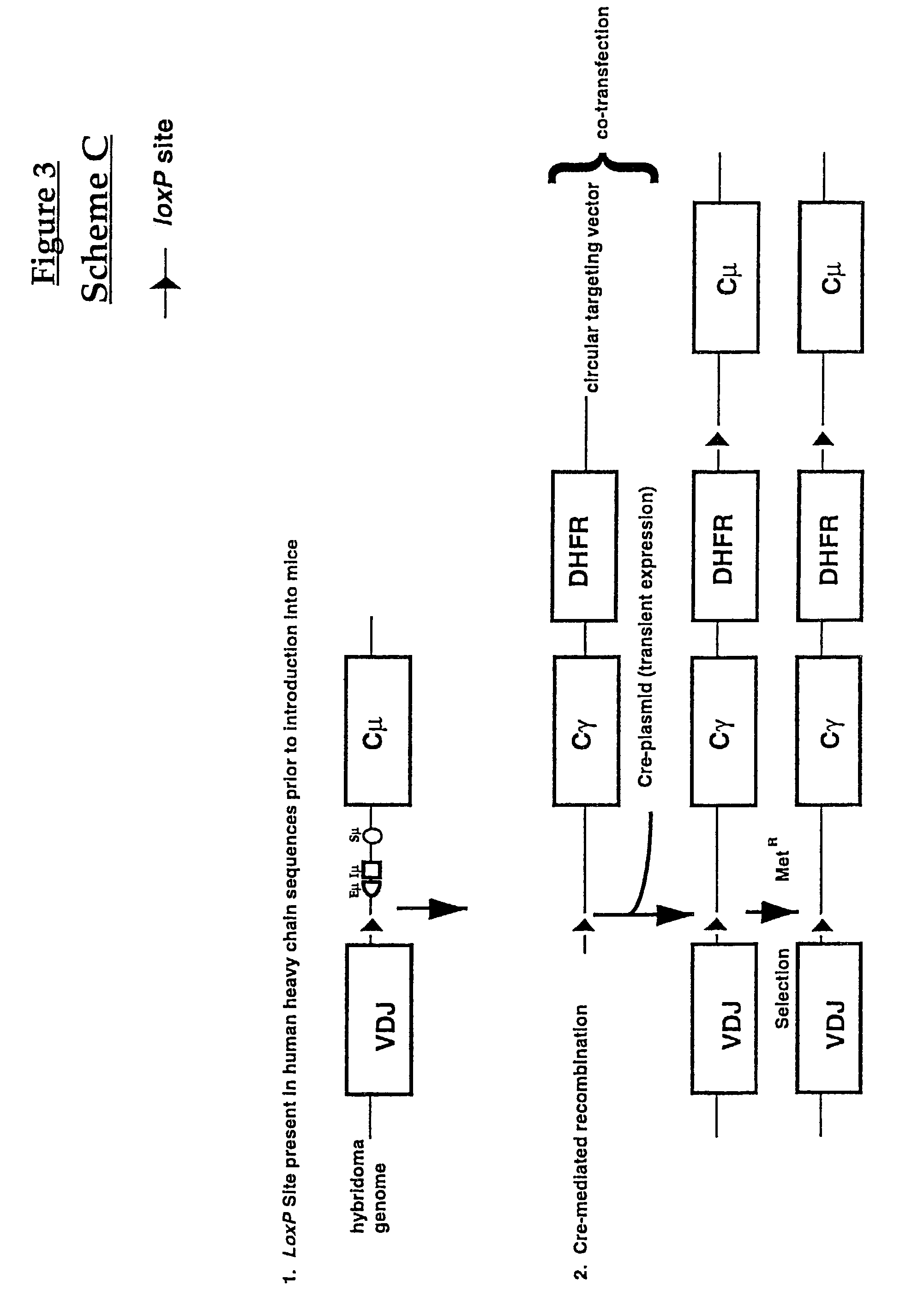Production of antibodies using cre-mediated site-specific recombination
a site-specific recombination and antibody technology, applied in the field of cre-mediated site-specific recombination production of antibodies, can solve the problems of limited utility, difficult to use such tedious techniques, and several obstacles in the development of human monoclonal antibodies, and achieve the effect of increasing the efficiency of recombination
- Summary
- Abstract
- Description
- Claims
- Application Information
AI Technical Summary
Benefits of technology
Problems solved by technology
Method used
Image
Examples
example 1
“Class-Switching” of Human Antibodies Produced in Murine Hybridoma Cells
[0105]FIG. 1 represents a schematic diagram of one embodiment (Scheme A) of the invention method to produce a cell expressing a human antibody molecule with a modified constant region using Cre-mediated site-specific recombination. The cell to be modified is from a lymphoid cell line (hybridoma) with a genome containing a human constant region gene which is to be converted to a modified constant region. Such cell lines may be generated, for instance, by transformation of murine hybridomas with vectors containing human constant region genes which are integrated using homologous recombination methods such as described by Fell, et al., supra. Such cell lines also are described by Kucherlapati et al., in PCT Publication WO91 / 10741 (published Jul. 25, 1991) which discloses production of antigen-specific human monoclonal antibodies from mice engineered with human immunoglobulin heavy and light chain genes. B-cells fro...
example 2
“Class-Switching” of Human Antibodies Produced in Murine Hybridoma Cells Comprising an Integrated Lox Site
[0110]FIG. 3 represents a schematic diagram of yet another embodiment (Scheme C) of the invention method to produce a cell expressing a human antibody molecule with a modified constant region using Cre-mediated site-specific recombination. The cell to be modified is from a lymphoid cell line (hybridoma) with a genome containing a human constant region gene which is to be converted to a modified constant region. The first lox site is integrated adjacent to the constant region gene (human Cμ) which is to be converted to a modified constant region (human Cγ). More particularly, Scheme C shows a lox site 5′ to the Cμ enhancer sequences (Eμ), the sequence of Cμ exon “I” (Iμ) and Cμ switch sequences (Sμ) of the human Cμ region.
[0111]Such cell lines may be generated, for instance, by transformation of murine hybridomas with vectors containing human constant region genes which are integ...
PUM
| Property | Measurement | Unit |
|---|---|---|
| length | aaaaa | aaaaa |
| affinity | aaaaa | aaaaa |
| drug resistance | aaaaa | aaaaa |
Abstract
Description
Claims
Application Information
 Login to View More
Login to View More - R&D
- Intellectual Property
- Life Sciences
- Materials
- Tech Scout
- Unparalleled Data Quality
- Higher Quality Content
- 60% Fewer Hallucinations
Browse by: Latest US Patents, China's latest patents, Technical Efficacy Thesaurus, Application Domain, Technology Topic, Popular Technical Reports.
© 2025 PatSnap. All rights reserved.Legal|Privacy policy|Modern Slavery Act Transparency Statement|Sitemap|About US| Contact US: help@patsnap.com



